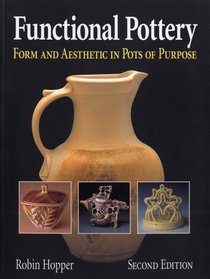Search -
Functional Pottery
Functional Pottery
Author:
Functional Pottery has been used by potters around the world and in a great many colleges and universities as required reading. It is a book of personal development in the design, making, and aesthetics of ceramics objects for use, based on more than 40 years of practical experience. This book includes images of work by potters from aroun... more »
Author:
Functional Pottery has been used by potters around the world and in a great many colleges and universities as required reading. It is a book of personal development in the design, making, and aesthetics of ceramics objects for use, based on more than 40 years of practical experience. This book includes images of work by potters from aroun... more »
ISBN-13: 9781574983036
ISBN-10: 1574983032
Publication Date: 12/1/2008
Rating: ?
ISBN-10: 1574983032
Publication Date: 12/1/2008
Rating: ?
0 stars, based on 0 rating
Publisher: The American Ceramic Society
Book Type: Paperback
Members Wishing: 3
Reviews: Amazon | Write a Review
Book Type: Paperback
Members Wishing: 3
Reviews: Amazon | Write a Review




